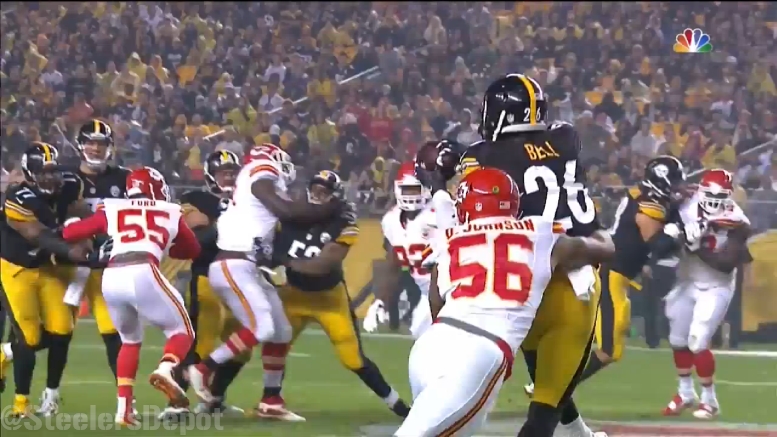Last week, the Pittsburgh Steelers did not have the advantage of having their usual backup running back, DeAngelo Williams at their disposal. And yet the offense still ran a very high number of plays. The offense’s solution? Leave their fourth-year running back, Le’Veon Bell, on the field. In the Steelers’ 76 offensive snaps, Bell played 75 of them.
He came off the field just one time throughout the whole game, in the middle of the fourth quarter, for which Fitzgerald Toussaint spelled him on a passing play that was completed for seven yards. Bell then came back on the field for the remaining 13 plays in the game.
While it is not out of the ordinary for a running back to log a heavy amount of snaps, no matter what sort of rotation, or lack of a rotation, a team might use, I’m willing to wager that it’s pretty rare for one to miss just one snap when he played at least 75 snaps in a game.
Of course, Bell is a 24-year-old physical specimen, who is in the best shape of his life, and can certainly handle the workload. Aside from that, he has only been on the field for four games this season, while the rest of his teammates, and most of his opponents, have already competed in seven, so he should have fresher legs.
No doubt part of the Steelers’ willingness to use Bell so extensively over the course of the game is the fact that they are able to use him quite a bit at the line of scrimmage, rather than consistently coming out of the backfield. He lined up as a wide receiver 14 times against the Patriots this past Sunday, though that number does include one pre-snap penalty, so it is actually 13 plays run.
And when he was lined up as a wide receiver, he did not necessarily get a lot of work. Admittedly, some of the reps that he gets at the line of scrimmage are somewhat passive in nature, perhaps used as an opportunity to get him a breather while still forcing the defense to account for him.
Against New England, he was targeted three times while lined up as a wide receiver, though he only caught one of them for a six-yard gain. Those three targets include the late deep pass that fell incomplete, but which would have been negated by an illegal formation penalty anyway.
It might be interesting to note that of his 14 snaps lined up as a wide receiver, the Steelers used an empty, five-wide set on eight of those plays, meaning that all skill position players were lined up along of off-set from the line of scrimmage in a wide receiver stance, declaring their intention to run a route.
These snaps were also fairly distributed throughout the game, although half of them did occur in the fourth quarter on the final drive. What does seem clear, at least, is that the Steelers’ ability to move him around bolsters their confidence in his ability to absorb an excessive number of snaps.








